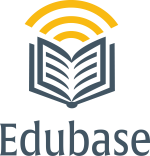Virtual environment and teaching methodology in Higher Education in on-site modality
DOI:
https://doi.org/10.7213/dialogo.educ.7647Resumo
This paper discusses the use of virtual environments in Higher Education in the presential modality. It comes from reflection on the results of qualitative research on exploratory-interpretative processes of interaction and mobilization of knowledge identified in students from a classroom course in Mathematics using resources from virtual learning environments. The theoretical framework is based on Thompson (2004), Primo (2008), Silva (2010), Scherer (2005), Charlot (2000), among others, with regard to the processes of interaction and mobilization of knowledge; in Guérios (2002) and Doll Jr. (1997) regarding the methodology of teaching in teacher education. The methodology of teaching is considered in an epistemological perspective that considers the relationship between subject and knowledge in the light of the curriculum learning. We observed that knowledge was mobilized in the interactive process and that there was conceptual learning of theoretical foundations of the Methodology of Teaching Mathematics subject. We discuss these results in view of the methodology of teaching in initial teacher training. We conclude pointing to the possibility of building a teaching methodology for higher education in the classroom mode, in which the spaces and virtual classroom environments are used as articulated environments, in the context of pedagogical practices that favor the existence of a reflexive learning movement.Downloads
Referências
BAIRRAL, M. A. Discurso, interação e aprendizagem matemática em ambientes virtuais a distância. Seropédica: Editora Universidade Rural, 2007.
BROUSSEAU, G. Guy Brousseau: a cultura matemática é um instrumento para a cidadania. Revista Nova Escola, n. 228, dez. 2009. Disponível em: <http://revistaescola.abril.com.br/matematica/fundamentos/cultura-matematica-instrumento-para-cidadania-guy-brousseau-calculo-518776.shtml>. Acesso em: 2 nov. 2010.
BUTTS, T. Formulando problemas adequadamente. In: KRULIK, S.; REYS, R. E. (Org.). A resolução de problemas na matemática escolar. Tradução Hygino H. Domingues, Olga Corbo. São Paulo: Atual, 1997. p. 32-48.
CHARLOT, B. Da relação com o saber: elementos para uma teoria. Porto Alegre: Artmed, 2000.
DOLL JR., W. Currículo: uma perspectiva pós-moderna. Porto Alegre: Artes Médicas, 1997.
GUÉRIOS, E. Espaços oficiais e intersticiais da formação docente: história de um grupo de professores na área de ciências e Matemática. 2002. 234 f. Tese (Doutorado em Educação) – Universidade Estadual de Campinas, Campinas, 2002.
GUÉRIOS, E.; SAUSEN, S. Ambiente Virtual de Aprendizagem e educação presencial: uma integração possível na formação de professores. Práxis Educativa, v. 7, n. 2, 2012.
doi:10.5212/PraxEduc.v.7i2.0012.
MOREIRA, M. A.; MASINI, E. F. S. Aprendizagem significativa: a teoria de David Ausubel. São Paulo: Centauro, 2001.
ONTORIA, A. et al. Mapas conceptuales: una tecnica para aprender. 5. ed. España: Narcea, S.A. de Ediciones, 1995.
ONUCHIC, L. R. Uma história da resolução de problemas no brasil e no mundo. Palestra de encerramento do Institute for Social and Economic Research and Policy – ISERP. 2007. Disponível em: <http://www.rc.unesp.br/serp/trabalhos_completos/completo3.pdf>. Acesso em: 25 jul. 2012.
POLYA, G. A arte de resolver problemas: um novo aspecto do método matemático. Tradução e adaptação Heitor Lisboa de Araújo. Rio de Janeiro: Interciência, 1995.
PRIMO, A. Interação mediada por computador: comunicação, cibercultura, cognição. 2. ed. Porto Alegre: Sulina, 2008.
ROMANATTO, M. C. Resolução de problemas na formação de professores e pesquisadores. Disponível em: <http://www.rc.unesp.br/serp/trabalhos_completos/completo6.pdf>. Acesso em: 25 jul. 2012.
SANTOS, V. S. et al. Formação de professores numa visão complexa com o auxílio de metodologias e dispositivos em interfaces online. Revista Diálogo Educacional, v. 10, n. 31, p. 521-540, 2010.
SCHERER, S. Uma estética possível para a educação bimodal: aprendizagem e comunicação em ambientes presenciais e virtuais – uma experiência em estatística aplicada à educação. 241 f. Tese (Doutorado em Educação) – Pontifícia Universidade Católica de São Paulo, São Paulo, 2005.
SILVA, M. Integração das tecnologias na educação. Internet na escola e inclusão. Brasília: MEC/ SED, 2005.
SILVA, M. Sala de aula interativa: educação, comunicação, mídia clássica. 5. ed. São Paulo: Loyola, 2010.
THOMPSON, J. B. A mídia e a modernidade: uma teoria social da mídia. Tradução Wagner de Oliveira Brandão. 6. ed. Petrópolis: Vozes, 2004.
VILLELLA, J. Ideas para enseñar... a través de problemas. Montevideo: Zonalibro, 2006.
VISEU, F.; PONTE, J. P. A formação do professor de matemática, apoiada pelas TIC, no seu estágio pedagógico. Bolema, v. 26, n. 42A, p. 329-357, 2012. doi:10.1590/S0103-636X2012000100015.
Downloads
Publicado
Como Citar
Edição
Seção
Licença
O(s) autor(es) transfere(m), por meio de cessão, à EDITORA UNIVERSITÁRIA CHAMPAGNAT, pessoa jurídica de direito privado, inscrita no CNPJ/MF sob o n.º 76.659.820/0009-09, estabelecida na Rua Imaculada Conceição, n.º 1155, Prado Velho, CEP 80.215-901, na cidade de Curitiba/PR, os direitos abaixo especificados e se compromete a cumprir o que segue:
- Os autores afirmam que a obra/material é de sua autoria e assumem integral responsabilidade diante de terceiros, quer de natureza moral ou patrimonial, em razão de seu conteúdo, declarando, desde já, que a obra/material a ser entregue é original e não infringe quaisquer direitos de propriedade intelectual de terceiros.
- Os autores concordam em ceder de forma plena, total e definitiva os direitos patrimoniais da obra/material à EDITORA UNIVERSITÁRIA CHAMPAGNAT, a título gratuito e em caráter de exclusividade.
- A CESSIONÁRIA empregará a obra/material da forma como melhor lhe convier, de forma impressa e/ou on line, inclusive no site do periódico da EDITORA UNIVERSITÁRIA CHAMPAGNAT, podendo utilizar, fruir e dispor do mesmo, no todo ou em parte, para:
- Autorizar sua utilização por terceiros, como parte integrante de outras obras.
- Editar, gravar e imprimir, quantas vezes forem necessárias.
- Reproduzir em quantidades que julgar necessária, de forma tangível e intangível.
- Adaptar, modificar, condensar, resumir, reduzir, compilar, ampliar, alterar, mixar com outros conteúdos, incluir imagens, gráficos, objetos digitais, infográficos e hyperlinks, ilustrar, diagramar, fracionar, atualizar e realizar quaisquer outras transformações, sendo necessária a participação ou autorização expressa dos autores.
- Traduzir para qualquer idioma.
- Incluir em fonograma ou produção audiovisual.
- Distribuir.
- Distribuir mediante cabo, fibra ótica, satélite, ondas ou qualquer outro sistema que permite ao usuário realizar a seleção da obra ou produção para recebê-la em tempo e lugar previamente determinados por quem formula a demanda e nos casos em que o acesso às obras ou produções se faça por qualquer sistema que importe em pagamento pelo usuário.
- Incluir e armazenar em banco de dados, físico, digital ou virtual, inclusive nuvem.
- Comunicar direta e/ou indiretamente ao público.
- Incluir em base de dados, arquivar em formato impresso, armazenar em computador, inclusive em sistema de nuvem, microfilmar e as demais formas de arquivamento do gênero;
- Comercializar, divulgar, veicular, publicar etc.
- Quaisquer outras modalidades de utilização existentes ou que venham a ser inventadas.
- Os autores concordam em conceder a cessão dos direitos da primeira publicação (ineditismo) à revista, licenciada sob a CREATIVE COMMONS ATTRIBUTION LICENSE, que permite o compartilhamento do trabalho com reconhecimento da autoria.
- Os autores autorizam a reprodução e a citação de seu trabalho em repositórios institucionais, página pessoal, trabalhos científicos, dentre outros, desde que a fonte seja citada.
- A presente cessão é válida para todo o território nacional e para o exterior.
- Este termo entra em vigor na data de sua assinatura e é firmado pelas partes em caráter irrevogável e irretratável, obrigando definitivamente as partes e seus sucessores a qualquer título.
- O não aceite do artigo, pela EDITORA UNIVERSITÁRIA CHAMPAGNAT, tornará automaticamente sem efeito a presente declaração.












